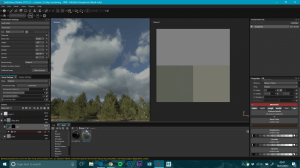This week was a test of all of my past experiments in one, followed by learning how to manually unwrap UVs, and about why texel density is important.
I started off by watching a few helpful tutorials about UVs here, here, and here. Once I understood the basics, I decided to create a new, lower-poly candlestick using cylenders instead of smoothed cubes. this reduced my polycount greatly on my driftwood, but made it higher on the candles and bases. This however, seemed justified, as it made the circles much smoother than before.
Unreal can handle about 2bilion polys per scene, so 3k isn’t much in comparison.
I created my candlestick, and then created a high poly version, a colour ID map, and created UVs considering texel density. the UV for this model was a huge improvement on past tests, due to applying all the things I have learned, including history deletion. you can see the process below.
Low-Poly Candlestick Creation from Brogan Lawes on Vimeo.
After, I imported everything into substance, hand painted normals, textured it, and exported the model out to Sketchfab. Throughout the whole process, I thought that the model was looking to be a huge improvement on past attempts, and normal painting and texturing was a lot cleaner with all of the previous issues fixed. Frustratingly, the candles appear to have an issue, and I am unsure why. This is something I need to look into further.

